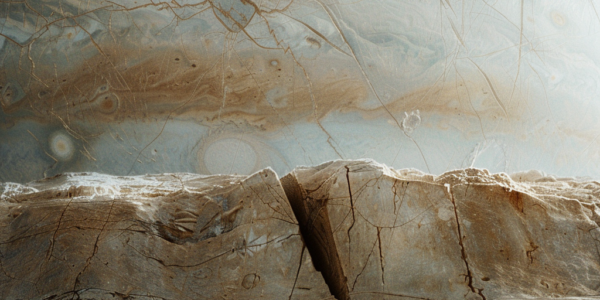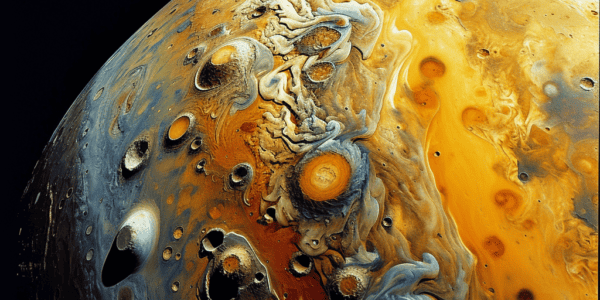New Theories on Origins of Mars’ Moon Phobos
Recent findings from previously unpublished photos of Mars’ moon Phobos suggest that it could potentially be a captured comet or a fragment of one, challenging existing theories about its origins. The upcoming MMX mission by the Japan Aerospace Exploration Agency aims to provide more insights into Phobos’ mysterious nature, sparking new avenues for scientific inquiry and exploration.
NASA’s Juno Spacecraft Discovers Jupiter’s Mysterious Fifth Moon, Amalthea
NASA’s Juno Spacecraft recently made an intriguing discovery during its 59th close flyby of Jupiter – the mysterious fifth moon known as Amalthea. Juno captured remarkable images of Amalthea as it transited Jupiter’s Great Red Spot, providing researchers with a rare glimpse of this small but fascinating natural satellite. Despite being overshadowed by Jupiter’s more prominent moons, Amalthea’s recent sighting has reignited interest in its enigmatic properties.
NASA’s Juno Captures Mesmerizing View of Volcanoes Erupting on Jupiter’s Moon Io
NASA’s Juno spacecraft captures mesmerizing images of volcanoes erupting on Jupiter’s moon Io, showcasing the dynamic landscape shaped by gravitational interactions. The stunning detail of Io’s surface reveals a network of active volcanoes and hot spots, providing scientists with valuable insights into the moon’s geology. Enhanced images highlight the beauty of Io’s volcanic wonderland, offering a glimpse into the complex interplay of forces within the Jupiter system.
Minimoons: The Key to Unlocking Secrets of the Early Solar System
Discover the secrets of the early solar system by studying Earth’s ‘minimoons’ or ‘quasi-moons’, which could provide valuable clues about the origins of our solar system. These tiny cosmic bodies, located near Earth’s orbit, may hold the key to understanding the conditions and composition of the early solar system, making them prime candidates for scientific exploration.
NASA’s Europa Clipper to Search for Extraterrestrial Life on Jupiter’s Moon
NASA is launching the Europa Clipper on a mission to study Jupiter’s moon Europa, one of the most promising places to search for extraterrestrial life in the solar system. The mission will analyze the moon’s vast saltwater ocean and cracked ice surface to determine whether it could support life, marking a significant step in the search for life beyond Earth.
Study Reveals Titan’s Subsurface Ocean Likely Non-Habitable
A study led by Western astrobiologist Catherine Neish has revealed that the subsurface ocean of Titan, the largest moon of Saturn, is most likely a non-habitable environment, reducing the likelihood of finding life in the outer solar system. Neish expressed disappointment at the findings, emphasizing the importance of water as a solvent for life. The study, published in the journal Astrobiology, quantified the amount of organic molecules that could have been transferred from Titan’s organic-rich surface to its subsurface ocean, using data from impact cratering.
The Moon’s Golden Potential: A New Space Race Emerges
In the vast, silent expanse of the cosmos, the Moon casts a glow of untapped potential, heralding the dawn of an extraordinary gold rush. More than just the Earth’s satellite, it’s a treasure trove of rare resources, including the potentially…
NASA’s Juno spacecraft captures stunning new images of Jupiter’s moon Io
Astronomers and space enthusiasts have been treated to a stunning display of new images of Jupiter’s moon Io, captured by NASA’s Juno spacecraft during its recent flyby on December 30. The spacecraft, part of a mission to study Jupiter’s origins,…








